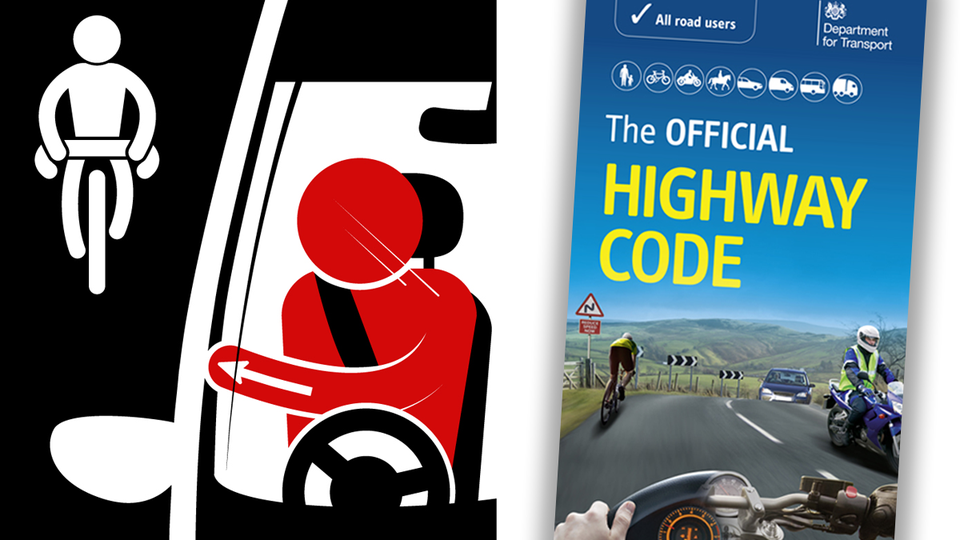The Cross Canada Cycle Tour Society November 2018, Volume 35, Issue #11
President’s Report John Pringle
Victoria Chapter a “Go” and More
Such good news! One of three goals that the Board laid out three years ago was a change in the governance model of the Club. We felt the “old” model was above all, undemocratic: That a handful of members in the “lower mainland”/Victoria area was running the show for ~600 members from the Comox Valley to Ottawa Valley. We looked at various governance models and decided that a series of chapters with a local administration connected to the national Board would permit local decision making on day rides, hub & spokes, cycling advocacy, social functions etc., and the Board could better concentrate on tours, non-chapter hub & spokes, riding safety, insurance, the allocation of funds from our legacy funds, etc. The concept was accepted and the two valleys, Ottawa, Ontario and Comox BC, led by Board Chapters Director Ed Fudge, signed up. A constitution & bylaws were created by each that were tied legally to the national constitution.
Our subsequent goals then were to encourage local leadership in both the Fraser Valley and Victoria areas, two population densities we felt could support chapters. Following months of near misses two Board members, Janet Whitehead and Jenni Linnea gave support to Clark Woodland, and the Fraser Valley Chapter submission was approved at the Board’s September meeting. That left Victoria as the only holdout.
Various appeals to Victoria seem to fall on deaf ears. Alex Laird, local titular “leader”/social convener was frustrated and submitted his resignation. However, it took two experienced hands in the cycling/hiking scene, Michael Bonner and Rolf Peterson, to marry their interest in Chapter formation with Alex, and at the annual “pie and ice cream” social in late October they sprung the chapter concept on a somewhat unsuspecting Victoria membership. They had done their homework, with Ed Fudge as their tutor. They presented a constitution and a set of bylaws. Background for their pitch came from Board member Bruce Daykin from Victoria. There was a fly in the ointment however: Max McClanahan wisely stated that this vote was premature; a vote to become a chapter would be a better first step. Geoff Buck, another “experienced” Victoria member then suggested a vote to accomplish this. And then suggested another vote to pick a committee to look at the constitution and bylaws. It passed. And, as I write, we have seven Victoria members assessing the constitution and bylaws. They also have the mandate to recommend an administrative structure and “headhunt” four or five Victoria members to form an executive. I’d say the Victoria chapter is in good hands, and well on its way to becoming a strong chapter. Yahoo!
In Praise of the Experienced. I used “experienced” in the above narrative to describe Michael, Rolf and Jeff. Sounds somewhat better than the usual descriptor, “old farts”. They have collectively been on Earth doing good work for greater than 240 years. Rolf, for example, spent years as the Clubs Newsbrief Editor. He then, along with wife Sharlayne, ran the “Better late than never gang”, a Sunday Club rides institution for years. Also in his “curriculum vitae” are two Club tours to Denmark along with miscellaneous activities for the collective good of the Club. We have others. Dan McGuire, struggling with Parkinson’s, continued organizing the Oliver hub and spokes well into his seventies. He continued to inspire with a solo ride across Canada at near eighty! Allan Buium, a little younger, continues to be an active and contributing member of the Board, and is considering offering a seventh Vancouver Hub & Spoke. He, as well, has co-organized four Fort Langley Hub & Spokes. In 2017 he led a camping tour in the Fraser Valley. Sonia Ward would likely still be contributing to the welfare of the Club as Hub & Spoke Director of the Board at near eighty, had she not suffered a debilitating stroke. She was a strong Croatian tour rider six years ago, nearly completing a strenuous122 km in a single day. Others such as Yvonne McLean and Jean MacDonald are still riding in their mid-seventies, and contributed greatly as Board members. Jean also organized tours to Yukon/Alaska and along the Dempster Highway. Chris Hodgson is still riding strong (he’s on the current Yunnan, China roster for example) after serving on the Board as Tours Director 10 or so years ago, and led a tour in Chile /Argentina, and coordinated a South Viet Nam tour. Hans Klein, Newsbrief editor, has churned out monthly editions for over 12 years. He began this task in his early sixties. He also served several terms as director. I could go on.
We owe a lot to these seasoned hands. Some of whom are still offering their services. Thanks again, Michael and Rolf, for “stepping up to the bar”. Hopefully, the new Victoria Chapter will offer up a few young folks; they have many experienced Club members to be inspired by and to emulate.
Annual General Meeting will be held in Victoria on Monday December 3rd at the Mary Winspear Centre, Rm. 4, 2243 Beacon Avenue, Sidney, BC., 11:00 AM.
As the “official nominating team” I’m asking you to consider giving up a bit of your leisure time. Why not try an activity that is both rewarding to yourself and beneficial to the cycling community. Yes, being part of the CCCTS Board of Directors. Just give me a call, or send a note, and I will give you the information that will hopefully help you to put your name forward for next year’s Board.
Hope you had a wonderful cycling season!
If you want opportunities to continue in local rides, Hub & Spoke events and tours, even workshops and social events, renew.
It’s easier to renew, than to join again, if your membership lapses.
Avoid the last minute reminders.
Starting Nov.1/18- Jan./19 the website is ready to accept renewals. www.cccts.org
Our webmaster, Max McClanahan, has even added a simple 3 step “How to Renew” video (click on membership).
The easiest reminder is to do it now. Check out the video, update your information if necessary, and continue to be involved!
Your brain, your social, physical and mental health — all will all be happier if you continue participating.
Jenni Lynnea, Membership Chair, CCCTS
Upcoming Tours
Tour Report
Hub & Spoke Report
Marie |
Jones |
North Vancouver |
BC |
Lani |
Schultz |
Oak Bay |
BC |
National Capital Region … Beechwood Cemetery Ride
Fourteen members of the CCCTS NCR Chapter and 3 guests enjoyed a leisurely cycle tour through Beechwood Cemetery, a National Historic Site as well as Canada’s National Cemetery.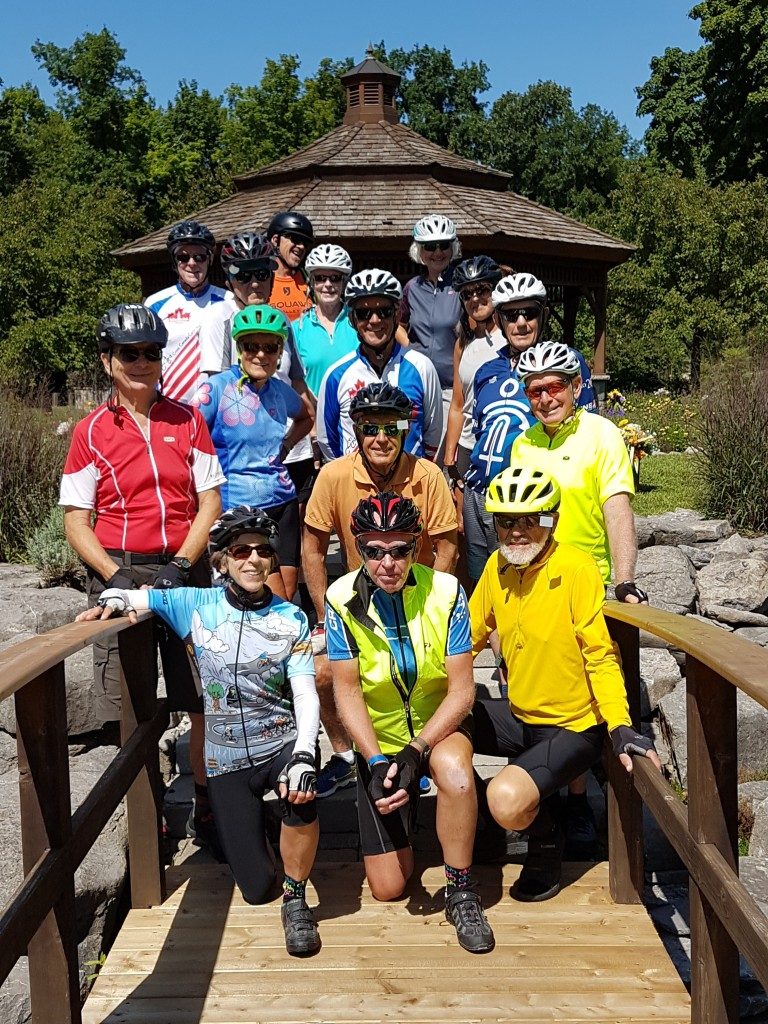
Everyone arrived by bike having ridden from various points in the region. The tour was led by fellow member and Beechwood guide, Barbara Wilson.
Beechwood, in a parklike setting, is a not-for-profit, multicultural, non-denominational cemetery covering 160 acres of land. It is made up of quiet roads and pathways, endless flower beds, towering trees and lily-pad ponds.
It is the final resting place of over 8000 souls. Buried here are people from all walks of life – scientists, poets, military heroes, politicians including one Canadian Prime Minister, many of Ottawa’s founding families, as well as ordinary folk.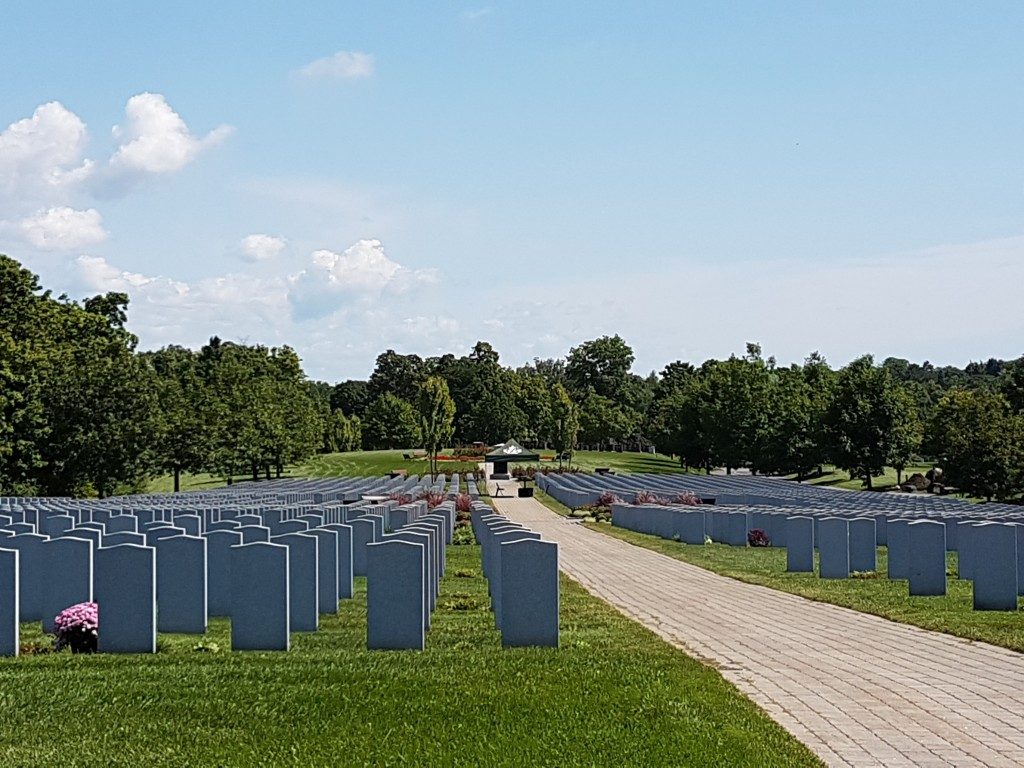
Of special note is the National Military Cemetery, the Chinese, Lebanese, and 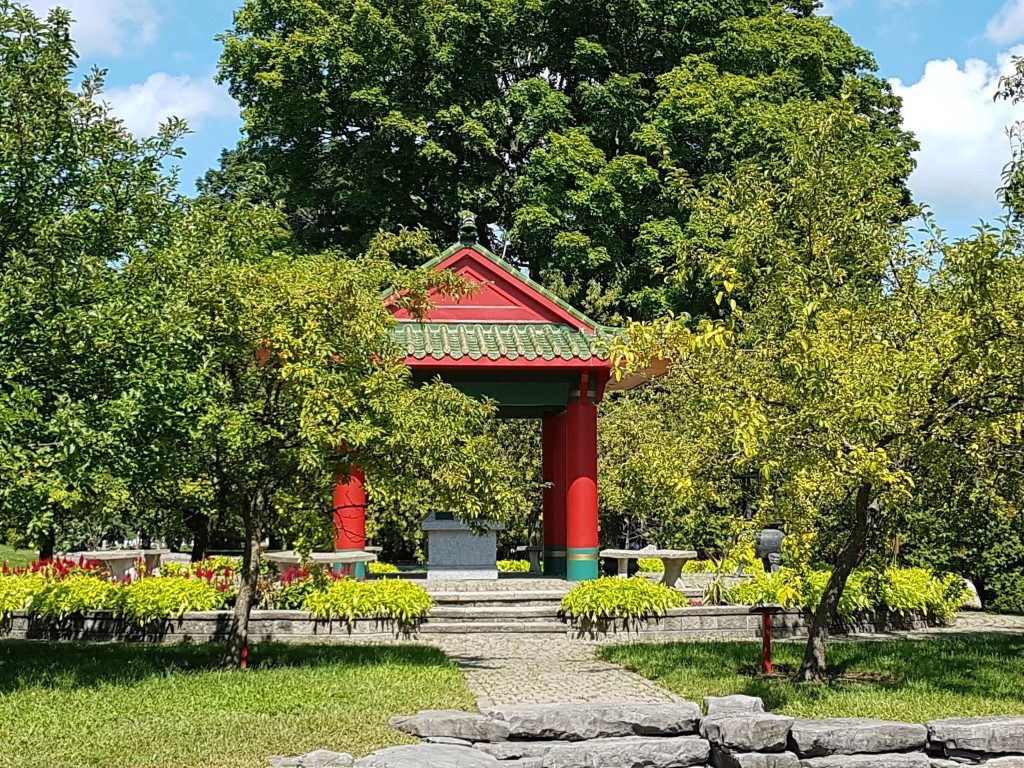 Portuguese sections, and the MacCoun Marsh, an environmentally sensitive and protected area. Located in the cemetery grounds, it is looked after by the students and teacher of a local school and features an outdoor classroom.
Portuguese sections, and the MacCoun Marsh, an environmentally sensitive and protected area. Located in the cemetery grounds, it is looked after by the students and teacher of a local school and features an outdoor classroom.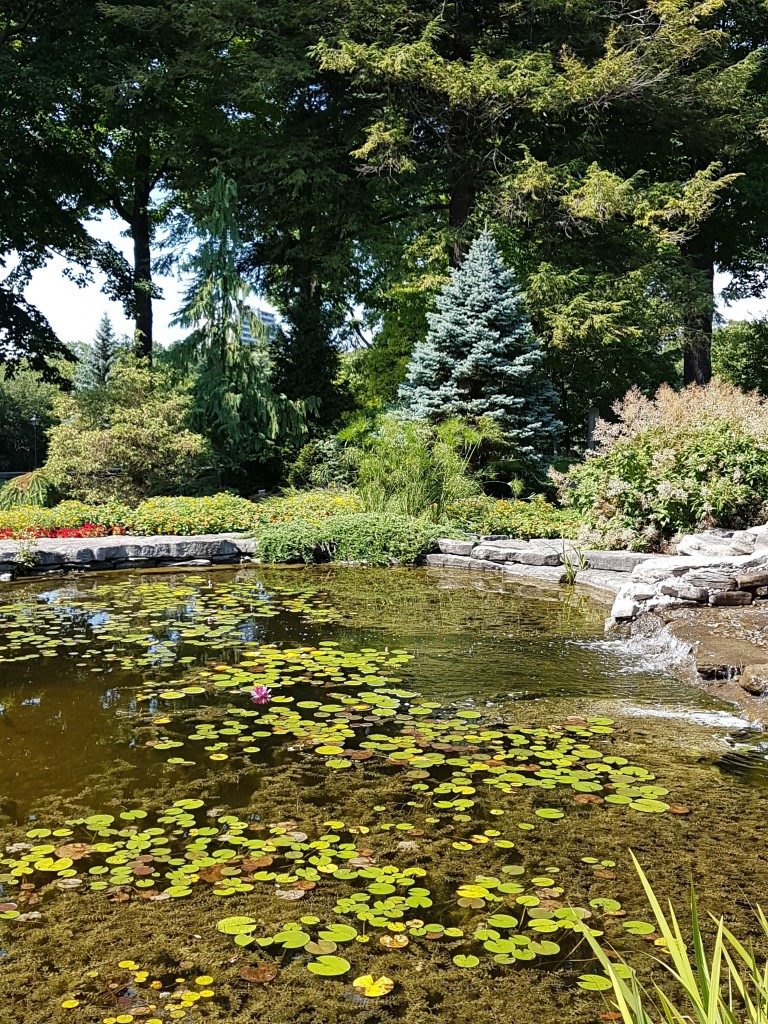
One of our members enlightened us on the life of her dear friend who arrived in Canada from Germany in the early years of WWII on one of the ships carrying Jews. So many were turned away from our country and subsequently met their deaths in concentration camps. Our new friend landed safely but was imprisoned in Ontario as an “Enemy of the State”. He survived to a grand old age and now lies at peace in Beechwood.
The tour ended with a reading of Canadian poet, Archibald Lampman’s poem, “In Beechwood Cemetery”. Lampman himself is buried in Beechwood.
Submitted by Barbara Wilson, CCCTS NCR Chapter Rep
‘Dutch Reach’ Car Door Opening Technique Added To Britain’s Road Rules
Carlton Reid, Contributor
The “Dutch Reach” could save livesNICK MOORE/DUTCHREACH.ORG/DFT
The UK’s official road-user rulebook is to incorporate a simple technique to make it more likely that motorists look over their shoulders when opening car doors. The next printed revision of the Highway Code will introduce British motorists to the so-called “Dutch Reach,” a method of opening a car door with the hand furthest from the handle, forcing drivers and passengers to check over their shoulders for approaching traffic.
The affliction of “dooring” mostly affects cyclists – many are killed annually by the dangerous maneuver – but the “Dutch Reach” technique could also protect drivers and passengers from being struck by oncoming vehicles, points out Britain’s Royal Society for the Prevention of Accidents.
The Highway Code has been updated and published every few years since 1931.
The new guidance follows a review of cycling safety by the UK’s Department for Transport (DfT). It also follows an incident in 2016 when transport secretary Chris Grayling opened the passenger door of his ministerial car, knocking a cyclist to the ground outside the Houses of Parliament in Westminster, London.
Announcing the update to the Highway Code, roads minister Jesse Norman said in a statement:
“Britain has some of the safest roads in the world, but we need them to be safer still – and particularly for cyclists [and] pedestrians.
“Cycling and walking are increasingly being understood as crucial parts of an integrated approach to issues of health, obesity, air quality and town and city planning. But this will only happen if people feel safe on the roads.”
As well as introducing the Dutch Reach, the Highway Code will update its advice to motorists on how to safely overtake cyclists.
Duncan Dollimore, campaigns head at cycle advocacy organization Cycling UK, said:
“Close overtakes and people opening car doors in front of cyclists are not only dangerous, but they also put people off riding bikes. That’s why Cycling UK has been campaigning for changes to the Highway Code for many years, to make the requirements crystal clear to give enough space when overtaking a cyclist, wait if you can’t, and look before you open your car door.”
Section 239 of the existing Highway Code tells motorists: “You must ensure you do not hit anyone when you open your door – check for cyclists or other traffic.” The law applies equally to motor-vehicle passengers. “Car dooring” is a criminal offense in the UK, punishable with a fine up to £1,000.
The concept behind the Dutch Reach has been familiar to learner drivers in the Netherlands since at least the 1970s, but the phrase is unknown in the country today. It was coined in 2016 by retired physician Michael Charney of Cambridge, Mass. He launched dutchreach.org to popularize the car-door-opening technique after he learned of the nearby death by dooring of a 27-year-old nursing student.
“This is a great step,” Charney told Forbes.com. “I applaud the DfT for adopting this simple, sensible hand swap to prevent needless injury to cyclists and other road users, including drivers and passengers themselves.”
The technique was given an early airing outside of the Netherlands in a 2011 New York Times article by U.S. historian Russell Shorto, author of a book on the Dutch origins of New York City.
He wrote: “Dutch drivers are taught that when you are about to get out of the car, you reach for the door handle with your right hand — bringing your arm across your body to the door. This forces a driver to swivel shoulders and head, so that before opening the door you can see if there is a bike coming from behind.”
Some jurisdictions have since incorporated the Dutch Reach into their road rules for motorists. The state of South Australia adopted the method in October 2017 and it was introduced by the Massachusetts Driver’s Manual in May of the same year.
“Reach, swivel, look back, open slowly, and then exit facing traffic,” recommends Britain’s Royal Society for the Prevention of Accidents which adds that the Dutch Reach “can also protect drivers and passengers themselves from being struck by an oncoming vehicle, as well as reducing the risk that their car door could be damaged or torn off by a passing vehicle.”
The Golden Rule
The UK’s Department for Transport cannot yet state the publication date for the revised version of the Highway Code. “This is a review of guidance; details yet to be formalized,” a DfT spokesperson told Forbes.com.
The first rule in the 1931 Highway Code was “Always be considerate towards others.” This concept did not originate with the then Ministry of Transport; it is thousands of years old and central to most of the world’s religious and ethical traditions. The Jewish scholar Hillel the Elder, a sage in the age of chariots, said the Old Testament could be boiled down to “What is hateful to you, do not do to your fellow.”
This cardinal rule is also in the latest Highway Code: “It is important that all road users are considerate towards each other.”
The Dutch Reach is a behavioral “nudge” aimed at making such consideration into an automatic – and potentially life-saving – maneuver.
Published at least ten times a year by The Cross Canada Cycle Tour Society, a non – profit organization for retired people and others who enjoy recreational cycling.
Items for the NEWSBRIEF must be received by the 28th of the month. The Editor reserves the right to edit for clarity, brevity and suitability of publication. The views expressed in the “NEWSBRIEF” are not necessarily those of the CCCTS or the Editor.
Submissions for NEWSBRIEF should be emailed to derailler@gmail.com
Please be sure to notify the office of any changes in your personal contact information; be it address, phone or e-mail.


